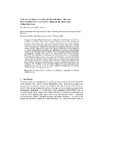Cultural tourism and livelihood diversification: The case of Gcwihaba Caves and XaiXai village in the Okavango Delta, Botswana

View/
Date
2009Author
Mbaiwa, J.E.
Sakuze, L. K.
Publisher
Taylor and Francis http://dx.doi.org/10.1080/14766820902829551Type
Published ArticleMetadata
Show full item recordAbstract
This paper uses the livelihoods framework to analyse how cultural tourism can diversify
livelihoods at XaiXai village in the Okavango Delta, Botswana. Both primary and
secondary data sources were used in this study. Primary data sources included
household and key informant’s interviews conducted at XaiXai village and Gcwihaba
Caves. Secondary data included both published and unpublished materials on cultural tourism, XaiXai village and Gcwihaba Caves. Results indicate that the San(Basarwa) of XaiXai’s traditional life of hunting and gathering has become a cultural tourism product in the Okavango Delta. Gcwihaba Caves’ geological formation particularly
the stalagmites, stalactites and channels also attract tourists that visit the Okavango Delta. The caves also have a cultural history in that they were used as a hiding place
by the Basarwa in times of wars, rainy season and cold winters. As such, the cultural
values of the San of XaiXai and Gcwihaba Caves are cultural tourism products that can diversify livelihoods at XaiXai village. Therefore, policies and strategies that
address cultural tourism and rural livelihoods in tourism destination areas need to be
developed. The Gcwihaba Caves and Xaixai Village case study demonstrates that cultural tourism can be a tool for rural livelihoods diversification in tourism destination areas of developing countries.
